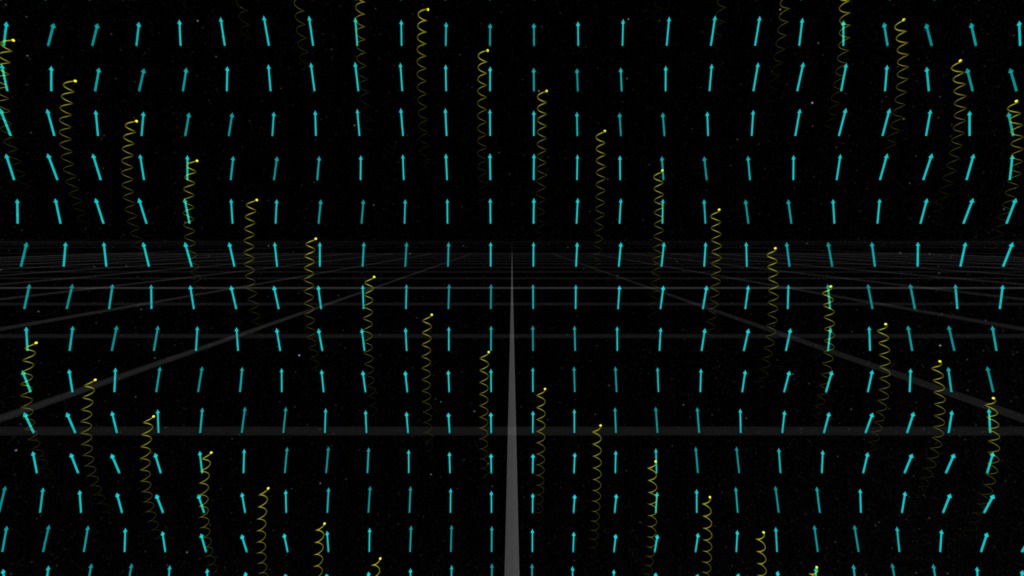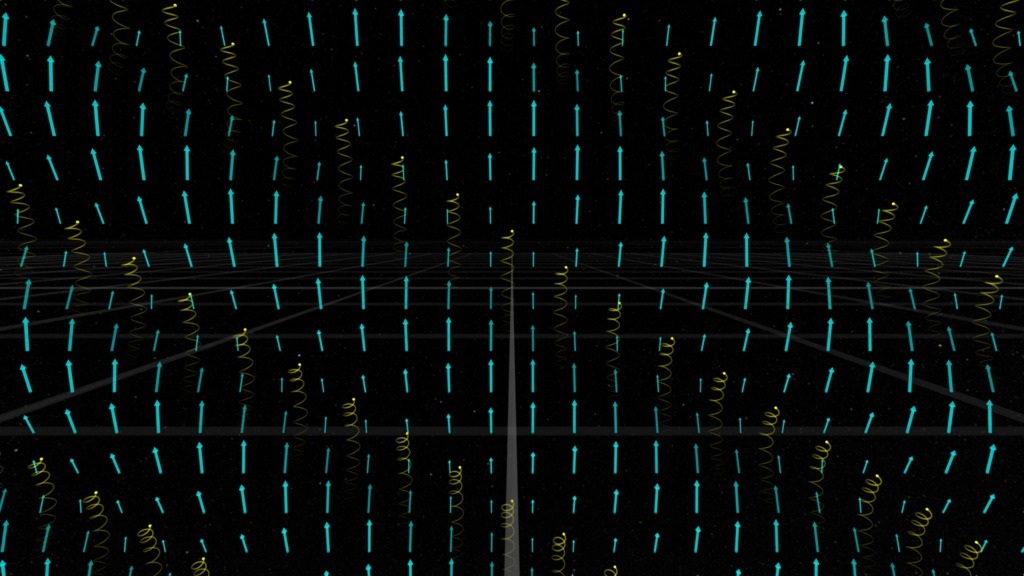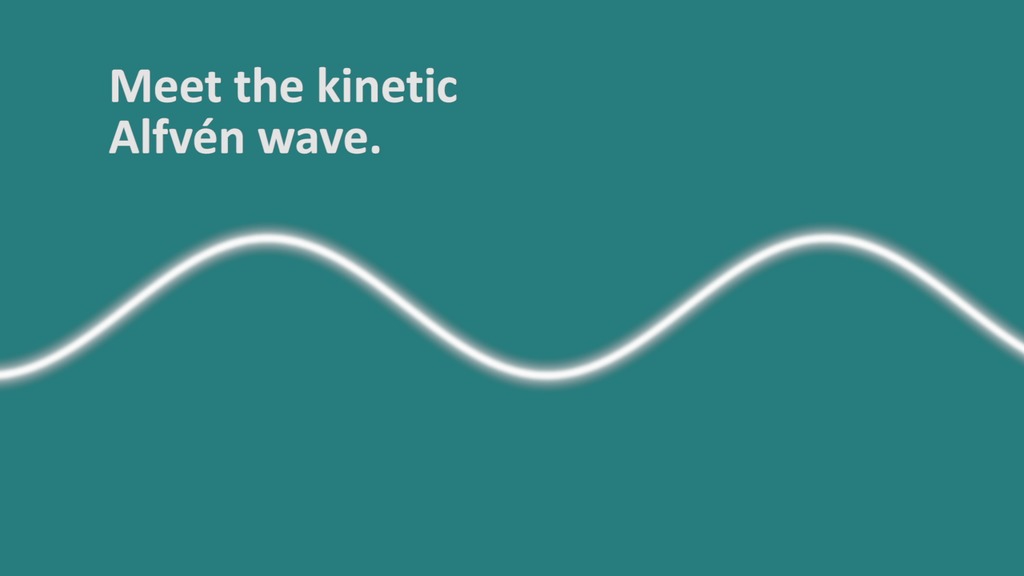Alfvén Waves - Kinetic
Kinetic Alfven waves represented by undulation in the magnetic field vector.
Most people are familiar with the three states of matter - solid, liquid, and gas. Less known is the fourth state of matter, plasma, when the atoms themselves break down into electrons and ions. Plasmas are actually more common in the universe than the better known solid, liquids and gas, because they tend to exist at temperatures and densities beyond our human experience.
Plasmas exhibit behaviors similar to fluids and gases, but with added complexity of containing magnetic (and occasionally electric) fields. In 1942, Hannes Alfvén combined the mathematics of fluid mechanics and electromagnetism to predict that plasmas could support wave-like variation in the magnetic field, a wave phenomenon that now bears his name, Alfvén waves. This would become the foundational paper for the study of magneto-hydrodynamics, or MHD, for which Alfvén would receive the Nobel prize in 1970.
Since they were hypothesized, Alfvén waves have been seen in plasmas on Earth and in space.
Like conventional fluids, plasmas can support waves, but with more variety than in conventional fluids. The waves initially proposed by Alfvén are considered 'basic'. They have a characteristic that they are compressional, which means that magnetic field variation of the Alfvén waves is in the direction of the wave motion. Charged particles moving through a plasma with these waves have very little alteration of their trajectory. Visualizations of basic Alfvén waves are presented at Alfvén Waves - Basic.
But Alfvén waves can exhibit more variety. A variant is the 'kinetic' Alfvén wave which is transverse, with strong magnetic field variation perpendicular to the wave motion, so can trade energy between the different frequencies which might propagate through a plasma. This also means it can exchange energy with the particles in the plasma, in some cases, trapping particles in the troughs of the waves and carrying them along. These types of waves are represented in the visualizations below.
References/Links
- Existence of Electromagnetic-Hydrodynamic Waves, Hannes Alfvén (1942)
- The Nobel Prize in Physics 1970
In this movie the wave is presented with particle propagation. For this version, all particles are initialized with the same direction and speed, but at the minimum in the magnetic field of the wave.
A closeup view of the particles from the movie above.
Same as movie above, but no background grid.
This visualization presents a range of particle speeds trapped in the minima of the kinetic Alfven wave.
Credits
Please give credit for this item to:
NASA's Scientific Visualization Studio
-
Visualizer
- Tom Bridgman (Global Science and Technology, Inc.)
-
Producer
- Genna Duberstein (USRA)
-
Technical support
- Laurence Schuler (ADNET Systems, Inc.)
- Ian Jones (ADNET Systems, Inc.)
-
Scientist
- Daniel J. Gershman (University of Maryland College Park)
-
Writer
- Mara Johnson-Groh (Wyle Information Systems)
Missions
This page is related to the following missions:Series
This page can be found in the following series:Datasets used
-
ParticleSimulator
ID: 846
Note: While we identify the data sets used on this page, we do not store any further details, nor the data sets themselves on our site.
Release date
This page was originally published on Friday, March 31, 2017.
This page was last updated on Wednesday, May 3, 2023 at 1:47 PM EDT.

![Discovering the Sun’s Mysteriously Hot Atmosphere Something mysterious is going on at the Sun. In defiance of all logic, its atmosphere gets much, much hotter the farther it stretches from the Sun’s blazing surface.Temperatures in the corona — the Sun’s outer atmosphere — spike to 3 million degrees Fahrenheit, while just 1,000 miles below, the underlying surface simmers at a balmy 10,000 F. How the Sun manages this feat is a mystery that dates back nearly 150 years, and remains one of the greatest unanswered questions in astrophysics. Scientists call it the coronal heating problem.Watch the video to learn how astronomers first discovered evidence for this mystery during an eclipse in the 1800s, and what scientists today think could explain it.Music credits: 'Developing Over Time' by Ben Niblett [PRS], Jon Cotton [PRS], 'Eternal Circle' by Laurent Dury [SACEM], ‘Starlight Andromeda' by Ben Niblett [PRS], Jon Cotton [PRS]Coronal spectrum image credit: Constantine EmmanouilidiComplete transcript available.Watch this video on the NASA Goddard YouTube channel.](/vis/a010000/a012900/a012903/CHP_Discovery_1080_4.00001_print.jpg)

